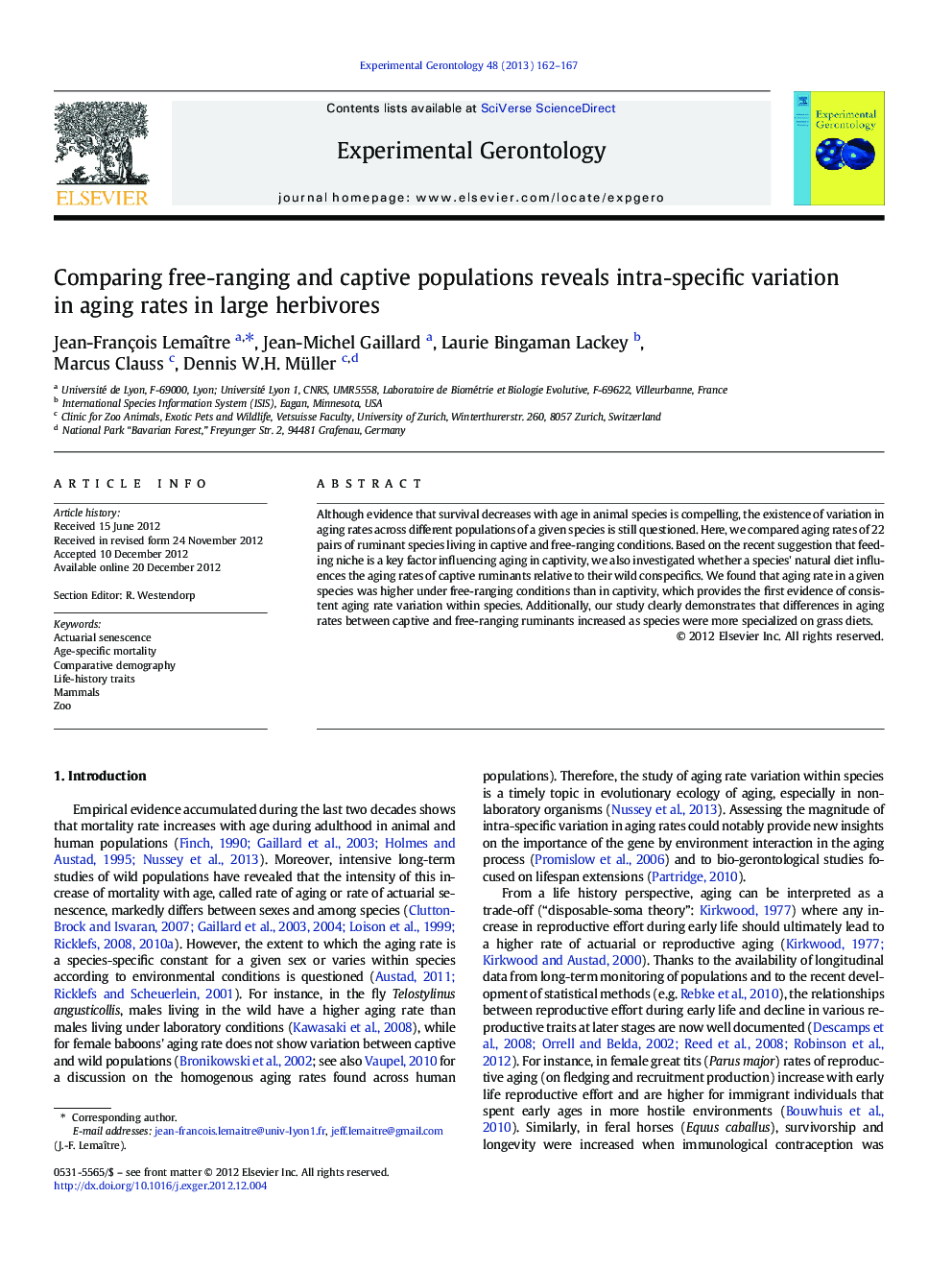| Article ID | Journal | Published Year | Pages | File Type |
|---|---|---|---|---|
| 1906377 | Experimental Gerontology | 2013 | 6 Pages |
Although evidence that survival decreases with age in animal species is compelling, the existence of variation in aging rates across different populations of a given species is still questioned. Here, we compared aging rates of 22 pairs of ruminant species living in captive and free-ranging conditions. Based on the recent suggestion that feeding niche is a key factor influencing aging in captivity, we also investigated whether a species' natural diet influences the aging rates of captive ruminants relative to their wild conspecifics. We found that aging rate in a given species was higher under free-ranging conditions than in captivity, which provides the first evidence of consistent aging rate variation within species. Additionally, our study clearly demonstrates that differences in aging rates between captive and free-ranging ruminants increased as species were more specialized on grass diets.
► We study aging rate variation across mammalian populations living in contrasted environments. ► Species living in captivity have a lower aging rate than their wild conspecifics. ► Aging rate variation across environment is strongly dependent of the species diet.
